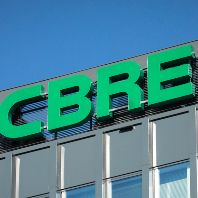Doug Rowlands, Head of the IPD Multi-national Team, explains that the IPD Pan- European Funds Index project is about to bear fruit. On March 16th 2012 IPD will be releasing a brand new Pan-European Funds Index, for the first time capturing the performance of funds devoted to investment across the continent. This Index will measure full net asset value-based fund performance, as received by the investors in the funds covered, and will represent the first benchmark for this kind of fund with full analytical capacity.
Doug Rowlands, Head of the IPD Multi-national Team, explains that the IPD Pan- European Funds Index project is about to bear fruit. On March 16th 2012 IPD will be releasing a brand new Pan-European Funds Index, for the first time capturing the performance of funds devoted to investment across the continent. This Index will measure full net asset value-based fund performance, as received by the investors in the funds covered, and will represent the first benchmark for this kind of fund with full analytical capacity.
Unlisted Pan-European funds have grown rapidly since the mid-2000s, reaching a net asset value (NAV) of around 8bn by the middle of 2011. Although their scale remains small compared to the US Open End Diversified Equity Fund (ODCE) market and the UK Pooled Property Fund market, they are nevertheless an increasingly important route by which global investors can access European real estate in a relatively efficient way.
One of the main rationales behind the creation of pan-European funds is that diversification across markets can deliver stronger risk-adjusted returns than countryspecific exposure. Tracking performance at the level of the fund and the asset enables investors and managers to substantiate this rationale. This information also enables important investment themes to be addressed such as the appropriate exposure to different markets at different times, and the number and value of assets that are required to create effective diversification across markets.
Andrew Grigson of Pramerica Real Estate Investors, who are supporting the index project, believes that "a commitment outside of an investor's home market places a greater due diligence burden on the investor and the manager alike. In addition to the standard points of reference such as manager track record, fund strategy and basic performance analysis, an investor will want to understand how the behaviour of the potential market differs from a domestic choice, as well as understanding the impact that this might have to their long term return on a risk adjusted basis."
The IPD Pan-European Funds Index, which will include 16 separate funds, was developed through 2011 in collaboration with leading global fund managers. IPD was already collecting data on the majority of the vehicles concerned, either at fund or portfolio level, and a meeting with the managers on 23rd June 2011 generated considerable enthusiasm for the plan to bring together fund and property performance in an integrated structure. This led to the formation of an index design group which formulated index conventions, defined reporting outputs, and planned a marketing strategy for the project.
This new index from IPD differs from the traditional offerings from other sources of European real estate trends such as Preqin, INREV and IPD's earlier European PPFI by focusing purely on a discrete group of vehicles with a Pan European mandate rather than a basket of vehicles that invest either nationally or cross border within the region.
In order to qualify for inclusion in the index, funds must have a mandate to invest in three European regions, be open-ended, and have a level of leverage no greater than 60%. The funds are also required to be valued in line with RICS Red Book guidelines on a quarterly basis by a third party appraiser, as well as having their underlying property assets measured by IPD.
Contributors to the index will receive a licence, allowing them to quote IPD Pan- European Index returns alongside their own fund's performance, as well as a















